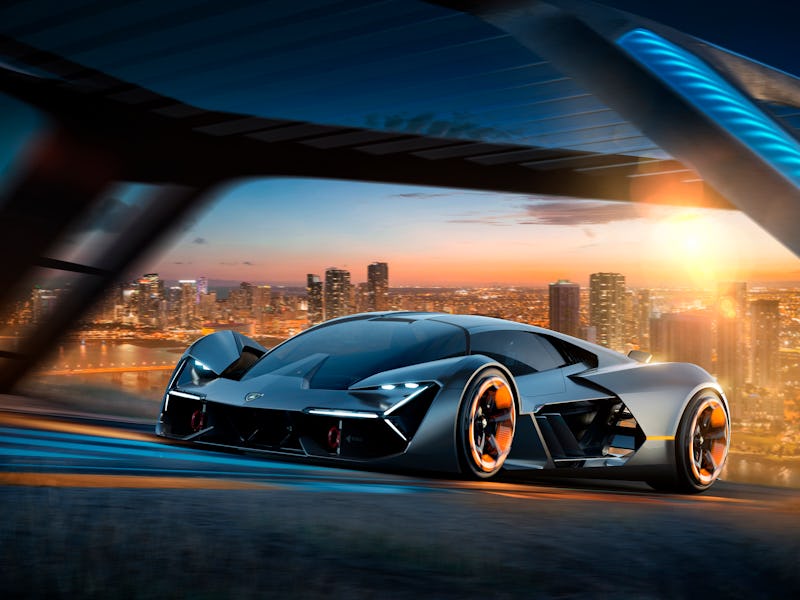
Lamborghini wants to make an electric car that ditches the batteries, and it’s working with the Massachusetts Institute of Technology to make it happen.
The company took the wraps off its electric sports car concept on Tuesday. With input from two MIT labs, the group has come up with a system that uses super-capacitors to deliver energy.
“Collaborating with MIT for our R&D department is an exceptional opportunity to do what Lamborghini has always been very good at: rewriting the rules on super sports cars,” says Stefano Domenicali, chairman and CEO of Automobili Lamborghini. “We are inspired by embracing what is impossible today to craft the realities of tomorrow: Lamborghini must always create the dreams of the next generation.”
The “Terzo Millennio” concept stores energy in carbon fiber nanotubes. These are capable of releasing energy faster than batteries, ideal for performance. They also cut down on weight compared to batteries, ending the tradeoff between battery size and vehicle mass.
Lamborghini Terzo Millennio.
“I want to go one, two, three laps without having to stop and recharge after every lap,” Mauricio Reggiani, Lamborghini head of research and development, told CNN.
Lamborghini Terzo Millennio.
If the team can bring the vision to life, it could give it a major advantage over competitors like Tesla. Elon Musk’s firm has dominated the electric car industry in recent years, with the Model S offering incredibly fast acceleration times of 0-60mph in 2.1 seconds. With the launch of the $35,000 Tesla Model 3, the company is focused on bringing traditional battery prices down by expanding output.
The use of supercapacitors also gives cars the ability to “self-heal.” If the car detects damage, micro-channels with healing chemistries can stop small cracks in the carbon fiber structure from turning into bigger ones.
Lamborghini Terzo Millennio.
The design does have some downsides, though. Unlike batteries, today’s supercapacitors aren’t very good at storing large amounts of energy. This is one of the major issues the team will now need to resolve.
Lamborghini Terzo Millennio.
“The new Lamborghini collaboration allows us to be ambitious and think outside the box in designing new materials that answer energy storage challenges for the demands of an electric sport vehicle,” says Mircea Dinca, professor at MIT. “We look forward to teaming up with their engineers and work on this exciting project.”
If you liked this article, check out this video about spherical tires for self-driving cars.